Crabgrass must be the most misidentified weed there is. Anytime people come across lawn weeds with a grassy outlook, they think it is crabgrass. This is a serious issue because many grassy weeds that people often mistake for crabgrass do not respond to crabgrass preventers.
For instance, tall clumping fescue looks very much like crabgrass but is very different and needs drastically different control methods. In this article, learn how to prevent crabgrass germination.
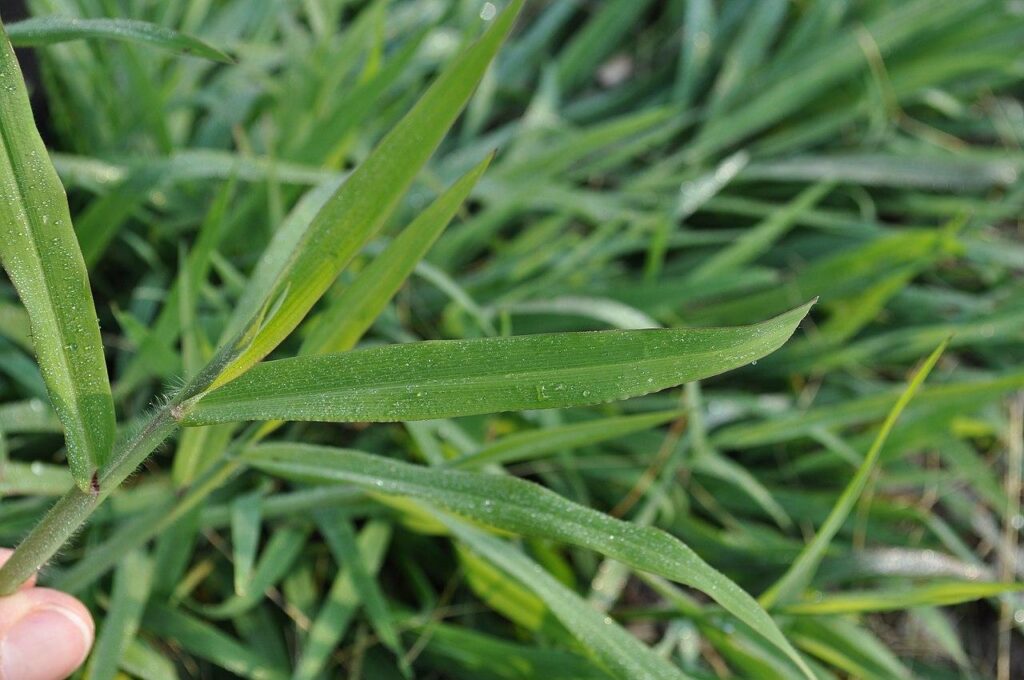
Establishing a healthy lawn is the best way to control crabgrass and other broadleaf weeds.
Nonetheless, there are many pre-emergent herbicides and post-emergent herbicides available that can be used to kill crabgrass seeds or crabgrass seedlings before they even have a chance to grow.
However, preventing crabgrass germination and spread requires proper knowledge and proper lawn care. So, let’s help you do it!
When Does Crabgrass Germinate?
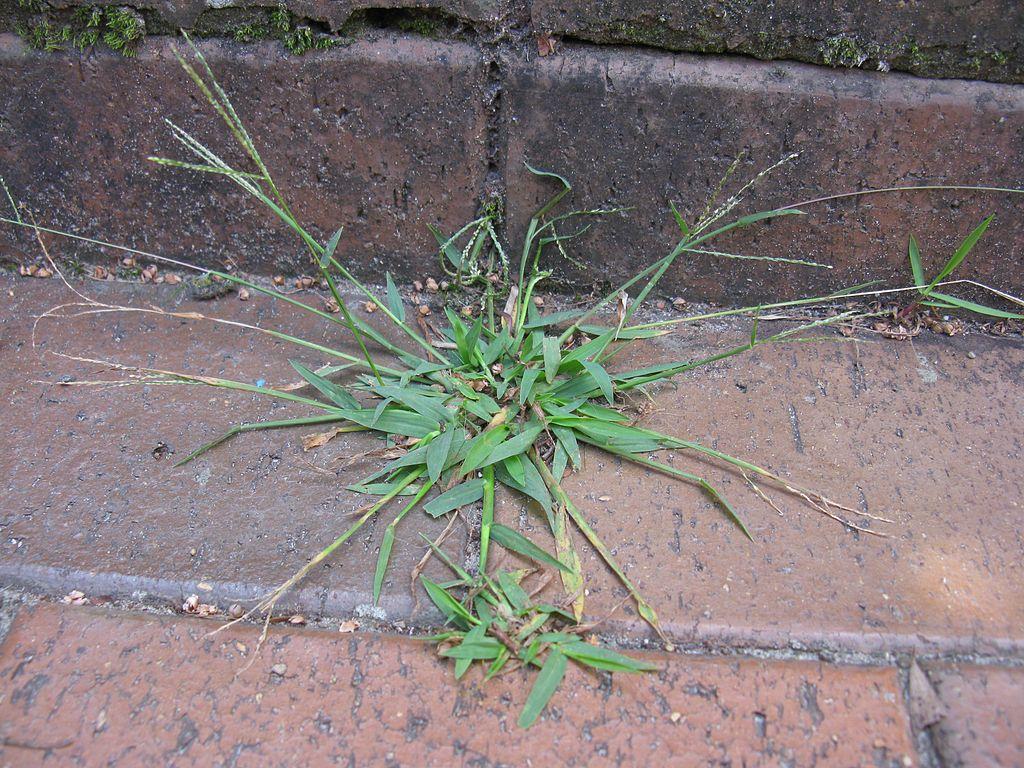
A crabgrass plant sprouting on a sidewalk.
Crabgrass germinates in early spring when soil temperature rises above 55 °F or 12 °C consistently for a few days. However, a large number of crabgrass seeds do not germinate unless the soil temperatures reach 73 °F or 22 °C at a one-inch depth for a few days consistently.
In addition to that, the soil temperatures of some areas of your yard will be different from other areas.
For instance, if an area is in the shade most of the day, the soil temperature will take longer to rise, and crabgrass seeds will take longer to germinate. Also, we suggest that you keep an eye out for crabgrass plants next to sidewalks.
This is because the concrete present in sidewalks absorbs more heat and the soil temperature near sidewalks increases much faster.
Crabgrass germination usually coincides with the flowering of forsythia plants. A forsythia bush is generally in full bloom when the growing season of crabgrass starts. Once seeds germinate, crabgrass keeps growing until late summer.
It is when days become shorter, and the vegetative growth slows down, and crabgrass plants enter their reproductive stage.
RELATED: Killing Crabgrass With Baking Soda (A Step By Step Guide)
Why Is Crabgrass Germination Important?

Smooth crabgrass.
Reading this article, you might be wondering why we are talking so much about crabgrass germination. Well, if you own a lawn, you must have come across weeds from time to time.
And, to deal with the lawn weeds, many experts suggest that you use pre-emergent herbicides so that weeds do not even show up on your lawn in the first place.
However, unlike most weeds that have a broad window in which you can use a pre-emergent herbicide, to kill crabgrass seeds, you have to use the pre-emergent herbicides just before the seeds germinate.
Therefore, if you apply a pre-emergent herbicide too early or too late, it might not be as effective in controlling the crabgrass problems on your lawn.
For instance, if the preemergence herbicides are applied too soon, they can disintegrate into the lawn soil, making preemergence application ineffective. Also, unlike what most people think, a preemergence herbicide does not stop seed germination.
Instead, it prevents the root development of the crabgrass seeds, which kills the plants.
Do Crabgrass Seeds Germinate In Fall?

Crabgrass is a prolific weed in gardens, lawns, athletic fields, and golf courses.
Crabgrass begins to germinate in early spring and keeps germinating till late summer. It does not usually germinate in the fall. When soil temperatures start to drop at the onset of cold months, crabgrass dies. It cannot survive cold and frost.
However, most plants by then have already shed their seeds. The seeds lie dormant in the soil until the spring returns and conditions for their germination become favorable again.
Another thing that happens in crabgrass-infested lawns when the fall comes is that the death of crabgrass leaves bare spots behind on the ground. These bare spots make your turf look patchy and unsightly. To deal with this issue, you can overseed your lawn.
However, you must do it at least 45 days before the first frost in your area.
Overseeding your lawn will make bare spots disappear and make your lawn thicker and fuller. Having a thicker and fuller lawn will also prevent you from a lot of other broadleaf weeds.
How Do You Stop Crabgrass From Germinating?
Crabgrass is a very prolific spreader and can outcompete most turfgrass species and other plants if not controlled in time. Here are a few ways you can prevent crabgrass from germinating on your lawn:
Use A Crabgrass Preventer
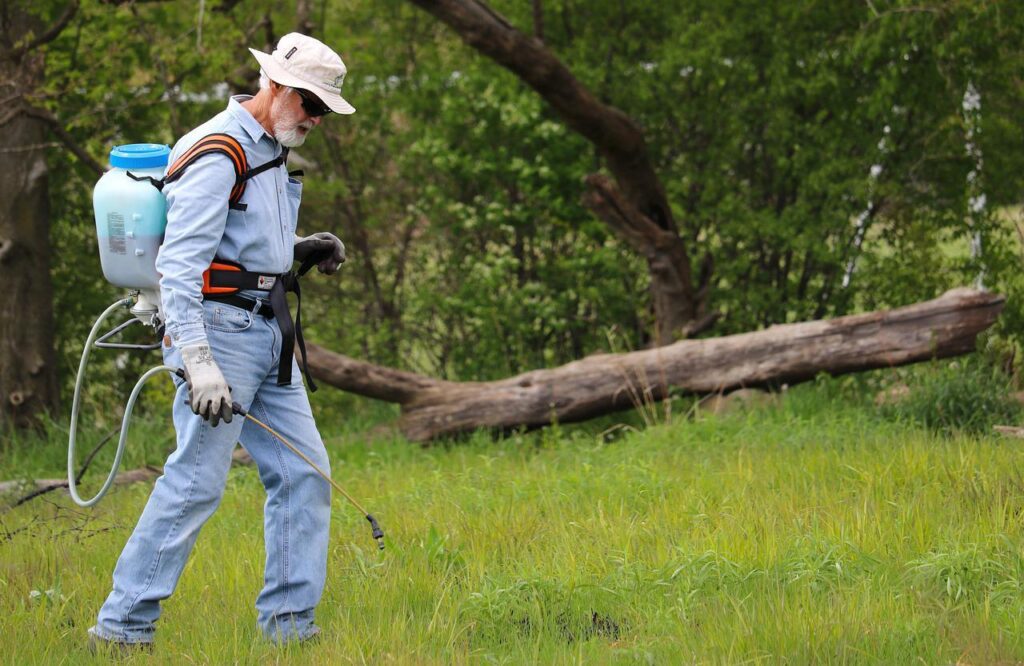
The best way to prevent weed seeds from germinating is to use a pre-emergent herbicide.
The best way of preventing crabgrass germination in your yard is to use a crabgrass pre-emergent herbicide. There are many crabgrass pre-emergent herbicides available in the market today. A good crabgrass preventer not only stops crabgrass germination but also kills weeds post-emergence.
The best time to use a crabgrass preventer is in early spring. As already stated above, timing is of critical importance when applying a pre-emergent herbicide. If used too early or too late, it might not work properly.
RELATED: Crabgrass Vs. Quackgrass | How To Tell The Difference & Which Is Worse?
Keep Your Lawn Thick
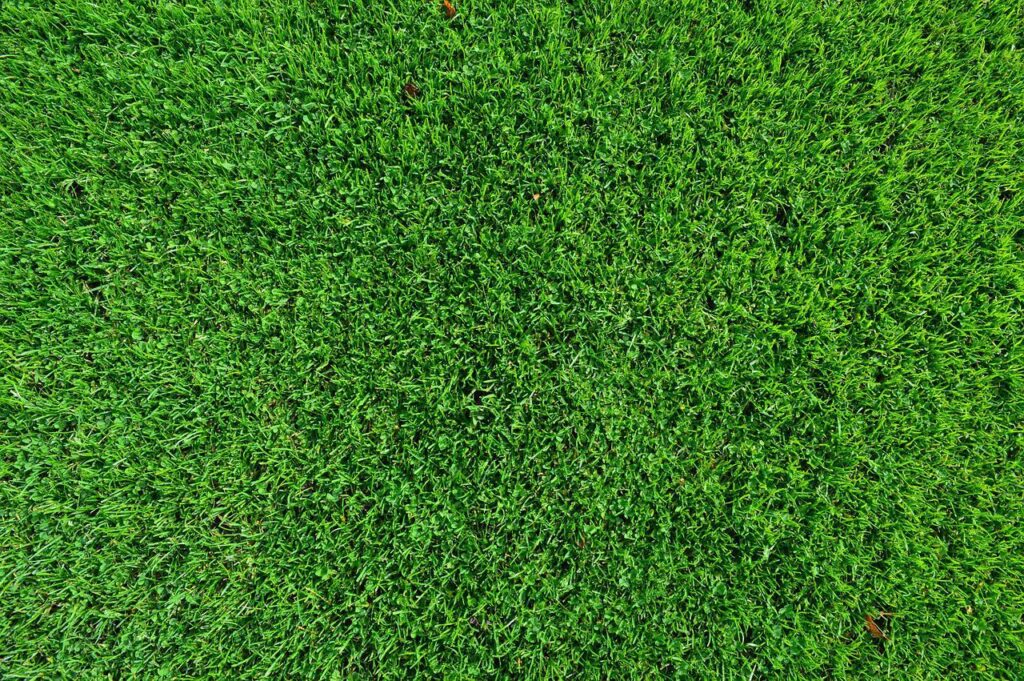
Keeping grass healthy and thick will prevent crabgrass from growing rapidly.
Healthy, established turf is the best defense against crabgrass infestation. If there are naked spots on your lawn, crabgrass will have no difficulty invading your lawn and quickly taking over. However, if the grass is thicker and fuller, it will help you control the spread of crabgrass on your lawn.
Crabgrass weeds will have a harder time growing as they will face intense competition from the grass for space, nutrients, and water.
If you see only a few crabgrass plants on your turf, weed control can be performed using a weeder or hand pulling. Once you have uprooted the crabgrass, fill in the empty spots with new grass. It will prevent crabgrass from returning and make your grass look thicker and fuller.
Mow High
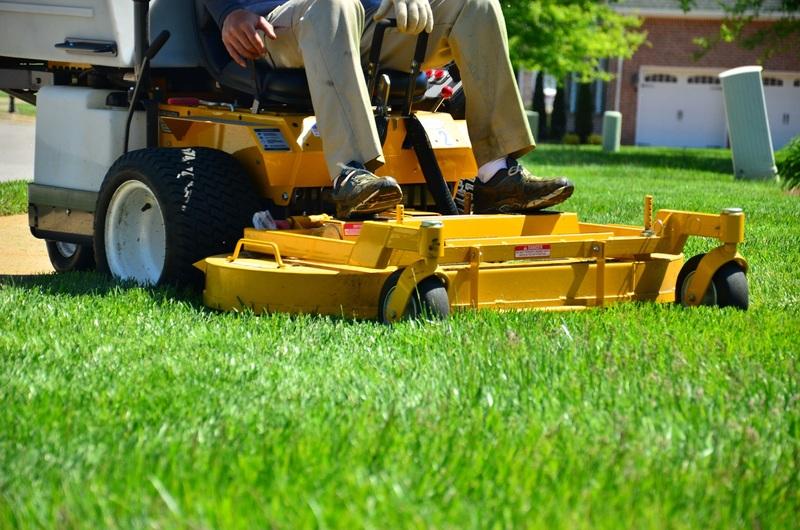
Setting a higher mowing height also reduces the crabgrass germination rate.
Another trick to prevent crabgrass from germinating in your grass is to mow high. It is because crabgrass is a weed that grows best in full sunlight. When young crabgrass does not get enough sunlight, it will quickly wither and die. Or at least its growth will slow down.
However, make sure that you do not cut more than one third of the grass blade with any mowing. Also, use a mower with sharp blades to make the cut uniform across the lawn. In addition to that, we suggest that you leave the grass clipping behind on the turf after mowing.
They will act as a natural mulch and decrease weed growth.
However, if you are mowing a lawn full of weeds, you should throw the grass clipping away. Do not even use these weed-infested grass clippings in compost. You might accidentally reintroduce weed seeds in your yard.
How Can I Tell If I Have Crabgrass?
Not only do people often confuse crabgrass with other grassy and broadleaf weeds but most people also do not know what crabgrass looks like. That is why it is often too late when people realize that crabgrass has taken over their entire lawn.
Identifying crabgrass can be difficult as it changes its appearance depending on its life stage and growth conditions.
Most people are familiar with young crabgrass plants that look like small corn plants. As the plant grows, leaf blades start to go farther apart, and the grass makes a star-shaped pattern. If not killed, it keeps on putting new shoots and eventually forms a sizable shrubby structure.
Other than structural variation, there is also color variation among crabgrass plants depending on the life stage. First, all seedlings are light green. Next, if the crabgrass gets enough sunlight, it will stay this color as it grows. Finally, when the plant becomes fully mature, it becomes a sort of dark green in appearance.
Some crabgrass plants also develop purple streaks as they grow. These streaks are most noticeable on the stem. They can also appear due to cold and frost. Nonetheless, crabgrass can mix easily with both, warm-season grasses and cool-season grasses very well.
You will have to keep an eye out and carefully observe your grass to see if your lawn is infested with crabgrass or not.
Sources For Further Reading
- Biology and Management of Crabgrass. Center for Agriculture, Food, and the Environment UMass Extension Turf Program. (2015). Retrieved 13 May 2022, from https://ag.umass.edu/turf/fact-sheets/biology-management-of-crabgrass
- Turf Tips. When Will Crabgrass Germinate? | Purdue University Turfgrass Science at Purdue University. (2022). Retrieved 13 May 2022, from https://turf.purdue.edu/when-will-crabgrass-germinate/
- How to prevent crabgrass. University of Illinois Extension Service. (2020). Retrieved 13 May 2022, from https://extension.illinois.edu/blogs/over-garden-fence/2020-04-20-how-prevent-crabgrass
Now that you know how to prevent crabgrass germination, make sure to check out our other yard maintenance tips:
How To Properly Aerate Bermuda Grass Lawn | Best Time To Aerate Your Bermuda Lawn
Most Effective Barriers To Keep Cars Off Grass | Stop Cars From Entering Your Lawn
Ironite Vs Milorganite: What’s The Difference and Which Is Better?







